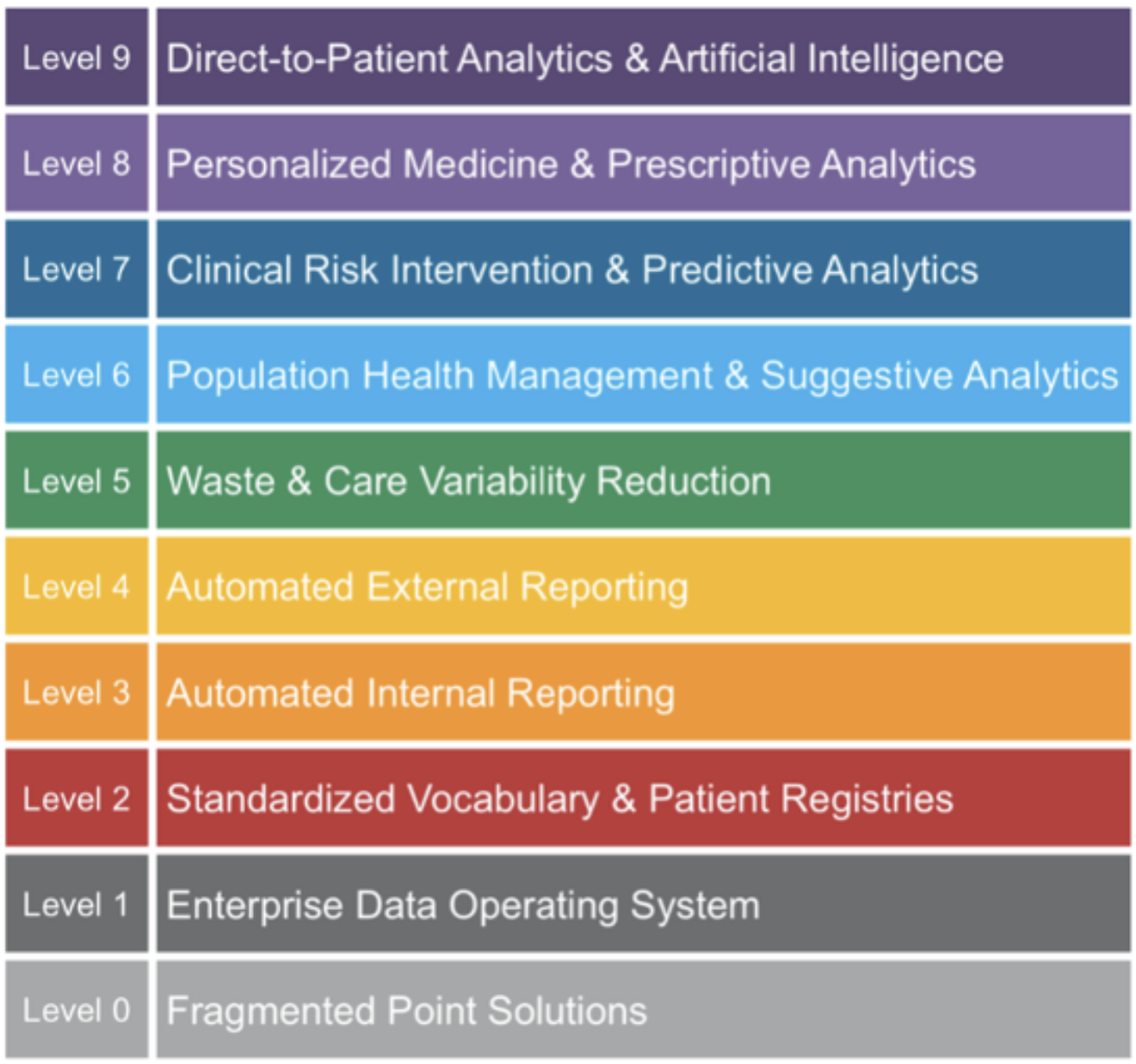The long-term success of healthcare performance improvement relies on a sustainable infrastructure and strategic execution. Otherwise, improvement initiatives risk becoming one-off projects that don’t support ongoing advances in critical areas, such as critical areas, clinical outcomes, patient experience, and organizational cost.
Healthcare organizations can follow six steps for a sustainable, impactful performance improvement program:
1. Integrate performance improvement into strategic objectives.
2. Use analytics to unlock data and identify areas of opportunity.
3. Prioritize programs using a combination of analytics and an adoption system.
4. Define the performance improvement program’s permanent teams.
5. Use a best-practice system to define program outcomes and interventions.
6. Estimate the ROI.



Health systems primarily concentrate performance improvement initiatives around critical areas, including clinical outcomes, patient experiences, and organizational costs. While this high-value improvement approach has the potential for significant impact, its long-term success relies on strategic execution.
Performance improvement efforts fall short of their desired results when organizations approach improvement as a series of one-off projects. To achieve an effective and sustainable performance improvement, organizations must develop and perform their initiatives within an ongoing performance infrastructure and program.
The ongoing performance improvement infrastructure comprises the following three systems-based elements:

Figure 1: The Healthcare Analytics Adoption Model.
With the improvement infrastructure in place, healthcare organizations can follow six steps for a sustainable, impactful performance improvement program:
Healthcare is a complex, adaptive system comprised of interactions and relationships between different components. Health systems must integrate performance improvement within the organization’s strategic objectives (e.g., forming an ACO or focusing on population health management). Integrating performance improvement also improves efficiency and focuses resources on programs most likely to yield meaningful overall benefit.
An analytics application can help an organization identify opportunities for improvement efforts by uncovering variation. Variation points to a potential for standardizing processes because the existence of variation inherently means that some care practices are more efficient and produce higher-quality outcomes than others. There also is a greater likelihood that some practices are not achieving optimum outcomes. Hospitals and health systems will have a significant opportunity for care improvement if they can identify their highest-performing practices and begin to make those practices and evidence-based practices the standards for all caregivers.
Variation in cost can be a good surrogate for quality of care because the higher cost may result from the delivery of inefficient or unnecessary services. As the prescribers of care, clinicians are among the most significant influencers in managing variable cost, representing the direct cost. By focusing on variable cost (i.e., looking at the volume of procedures and cost per procedure, in particular), they can identify avoidable costs and begin working with clinicians, using evidence-based practices, to address them.
Successfully improving clinical outcomes and streamlining operations requires a strong organizational commitment and changes in culture, organizational structure, staff education, and workflow processes. Consequently, any organization that embarks on a performance improvement journey should first assess its readiness for change. Examples of criteria that an organizational readiness assessment evaluates include clinical leadership readiness, data availability, shared vision, and administrative support (e.g., data manager, outcomes analyst availability).
A readiness assessment helps the organization determine how ready the teams are to accept change, to estimate what, if any, impact there is on staffing and the potential implications for frontline caregivers. Understanding the strategic objectives and integrating results from a readiness assessment and analytics help the organization prioritize which care families (clinical services) can be starting points.
The organization will require permanent performance improvement teams to review and analyze data, define evidence-based and best practices, and monitor ongoing results. Improvement teams should include the following components:
The focus of performance improvement initiatives for many organizations tends to be on low-performance outliers—that is, identifying instances where costs are much higher and outcomes substantially poorer than averages among caregivers. However, a more effective approach is to identify those practices that consistently lead to the best outcomes and promote them, with evidence-based guidelines, to improve outcomes across the board—in other words, best practices.
As the guidance team sets priorities for performance improvement, the team may also estimate the potential ROI for each initiative based on available information. The team can start by identifying organizational costs and assessing benefits using industry benchmarks for similar projects, vendor case studies, and internal estimates. Most organizations will need to educate their clinicians, operations, and finance departments on the value of sharing data and working together on interdisciplinary teams rather than keeping everything in silos.
Next, the team should identify direct benefits and savings (either from enhanced efficiency and productivity) or from clinical improvement and waste reduction. Then, the team can identify indirect benefits, such as a reduction in future infections or an improvement in patient satisfaction.
The team also should consider revenue opportunities, such as higher market share and patient volume, an increase in contract compliance, or a reduction of bad debt.
Creating a foundation for sustainable improvement and prioritizing initiatives does not have to be overwhelming. By following these steps and establishing a framework for performance improvement based on analytics, the right teams, and evidence-based practices, an organization can obtain the right tools to achieve and sustain performance improvement gains into the future.
Would you like to learn more about this topic? Here are some articles we suggest: